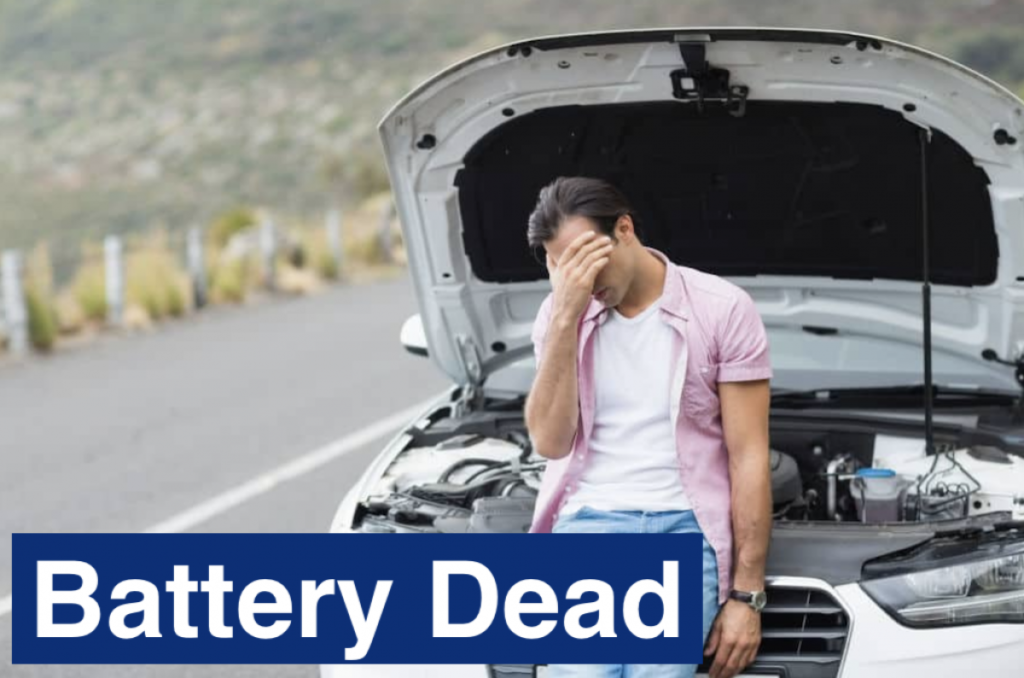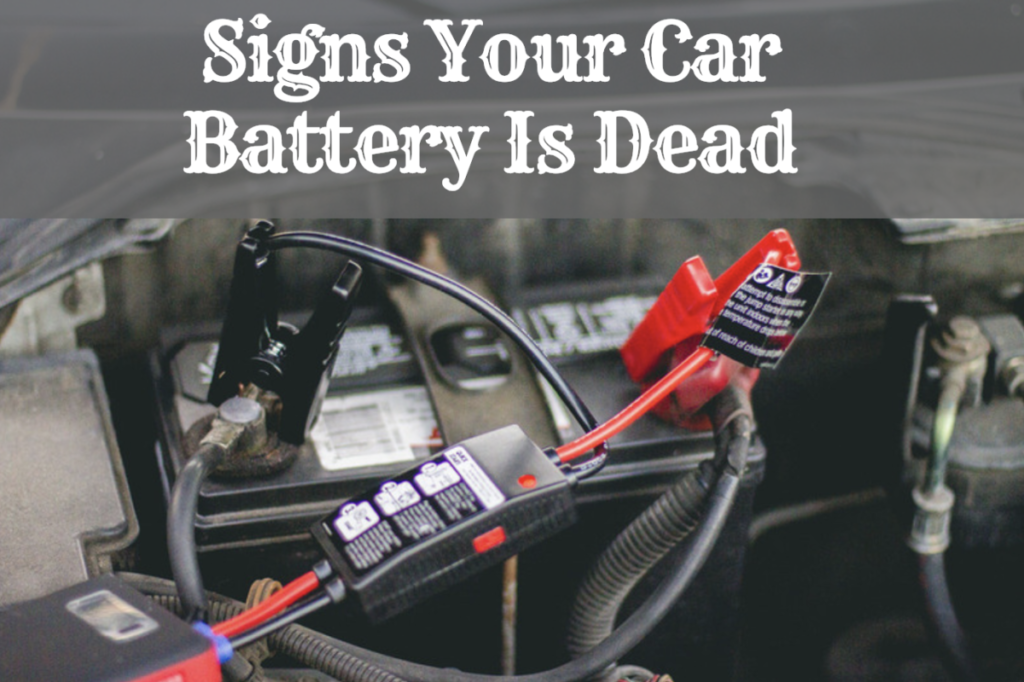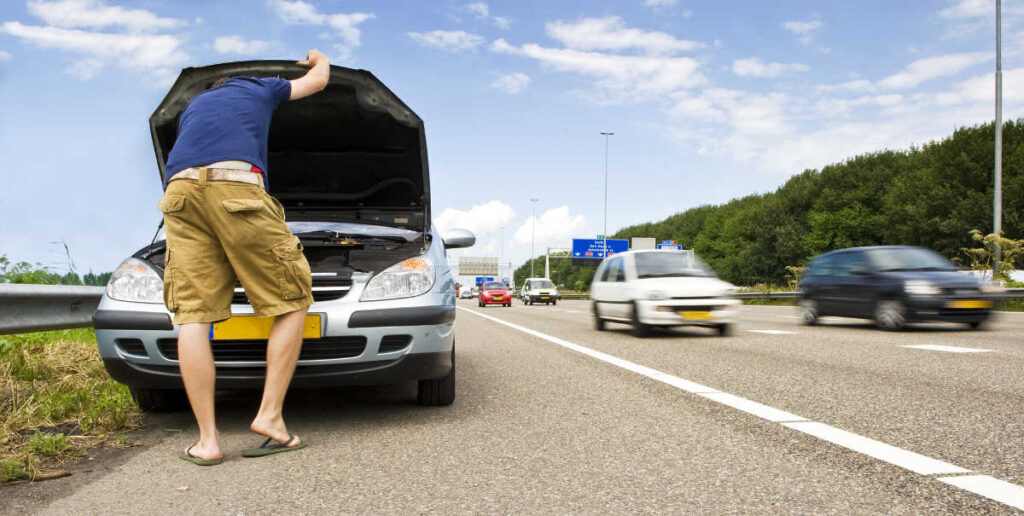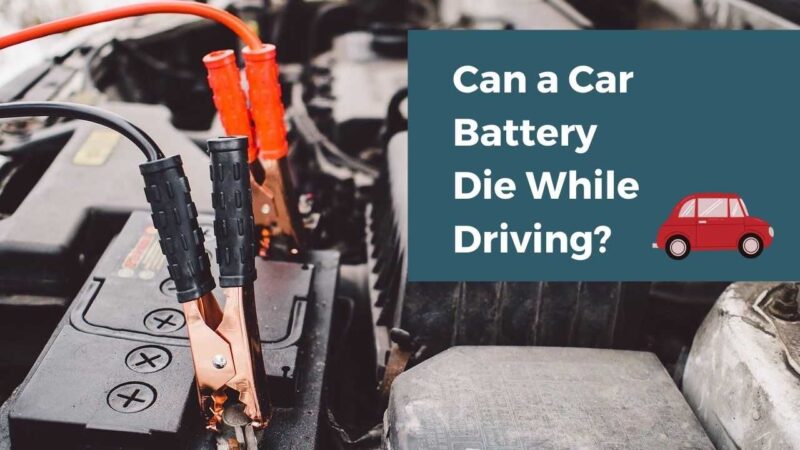Your car’s battery may run out while driving. When the engine is running, the battery drains, indicating a problem with your car’s electrical system. What if your car battery dies while driving? Now, let’s explore why your car battery breaks while driving and what happens when your car battery dies while driving.
Role of Car’s Battery
All electricity in your car comes from the battery. In other words, any component that requires current depends on the battery. It will connect directly to your battery and continue to supply power as long as the part is running.
Even if your car is not driving and the radio is on, the radio will continue to draw power from the battery until the radio is turned off or the battery is depleted.
One of the biggest tasks of the battery is to start the car when you turn the key. This requires a lot of power, and since the alternator hasn’t started yet, the battery has to do it on its own.
Reasons Why The Car Battery Dies While Driving

1. Out of Fuel
One of the main reasons why a car dies while driving is when the battery runs out of fuel. This is a common thing that happens to most of us. It’s important to fuel your car so you can restart the engine. Once you’ve smoked diesel or petrol, you can keep driving. To prevent this, you need to pay attention to the slight hum when you start the car. However, it is recommended that the fuel gauge be checked by a professional as false readings may occur.
2. Alternator Problem
Even with some problems with the alternator, the car’s battery can drain. You have to take care that when the engine is running, the alternator provides extra power and charges the battery. This is very important for the electrical system of the vehicle. Even if you happen to buy a new battery, it needs to be properly charged by the alternator.
In order to keep your car moving, the battery and alternator must work together. If you happen to see the red battery light on the dash flashing, it means the alternator is sending S.O.S. You must stop immediately and visit an auto repair service provider to resolve the problem.
3. Ignition switch Problem
If the ignition switch fails, you will face all kinds of problems. Your car won’t start, and you can’t even use the radio and other appliances. This is because a worn ignition switch can cause the engine to lose power. It is the power loss that causes the car to stall while driving.
4. Faulty Fuel Pump
Another cause of stopping a car while driving is a problem with the fuel pump. For this reason, be careful when refueling your car. If you happen to pump petrol into a diesel car or pump diesel into a petrol car, you may face this problem. This will lead to unexpected car breakdowns. Another cause could be a clogged filter or fuel pump. Best to go to the nearest workshop and tow the car away. In some cases, you may even hear a slight buzzing sound when you start the car for the first time.
5. Sensor Failure
You have to note that sensors can detect physical and chemical changes in the car. However, sometimes sensors can malfunction and provide incorrect information. This greatly affects the performance and efficiency of the vehicle. It is important to remember that modern cars are equipped with computers. This is one of the reasons why it may transmit incorrect information.
6. Battery Failure
We know that a dead battery won’t start. If the battery is faulty or damaged, it will start without any problems. However, it can die while driving. One reason is that the alternator keeps the engine system running. There is a risk of stalling when the alternator does not create more stress. Remember that even (high-end) car batteries can last up to 2 years. It’s important to replace your car battery so that you don’t face any flameout issues.
Can a Dead Battery Cause a Car to Die While Driving?
Even while you’re driving, a dead battery can cause your car’s engine to stop. A dead battery indicates that some part of the electrical system is not working properly. Usually, an alternator failure is a cause.
The alternator generates electricity for the car’s electrical system by converting the energy from the drive belt into electricity. One of the most common causes of alternator failure is a slipped or broken drive belt. This problem is easy to spot by visually inspecting the alternator. You can see a loose, cracked, or broken drive belt. Fitting a new drive belt to the alternator should do the trick.
If the drive belt appears to be intact, the alternator may have a faulty internal component. The culprit could be a faulty voltage regulator, faulty diodes on the rectifier assembly, or dirty electrical connections. Repairing the internal parts of an alternator is not an easy task, it requires a professional to diagnose and fix the problem.
Can a Car Battery Die Without Warning?
Even with the ignition off, your car’s battery is slowly discharged by accessories in the car. For example, when the car is not in use, the battery ticks the clock, and the safety system is enabled. The small amount of power used is not enough to kill a healthy battery. However, if the battery is faulty or the battery is very old, it can die without warning because it can’t keep up with the accessory discharge.
If there is a problem with the car’s electrical system, the discharge on the battery may increase, causing the battery to die suddenly. If your battery dies without warning, you should seek professional help to diagnose the problem.
What Happens if Your Car Battery Dies While Driving?
Car batteries have life. Even if you happen to get the best car battery, it will die for a variety of reasons. When the car battery dies while driving, you may face various problems such as
- Your car will stall in the middle of the road while driving.
- When restarting, the car’s engine flips over multiple times.
- In cold climates, the engine will not start.
- The exterior and interior lights will not turn on or dim.
- The fan will run slowly or not at all.
- The radio will receive a weak signal ok and turn off randomly.
- The heating water level will be absent or low.
- Once you turn off the car’s engine, the battery quickly stops working.
- Battery parts will be loose, damaged, or worn.
- Not enough power to run the injectors or spark plugs.
Signs of a Bad Battery

Some signs of battery damage are obvious, like your car not starting, or the “check engine” warning light on the dashboard. However, there are also some less obvious signs. You may observe physical signs on the battery or a problem with the car’s electrical system. If you find that the problem persists even when the engine is running, it may mean that your battery is struggling to stay charged and needs to be replaced. Signs of battery damage include:
- Your car is off.
- When starting, the engine is turned over three times or more.
- You need to start the car more than three times a week.
- In cold weather, your engine is harder to start than usual.
- Exterior lights appear dim or off.
- Interior lights appear dim, flickering, or off.
- The radio turns off intermittently or has a poor signal.
- The battery drains within 10 to 15 minutes of turning off the engine.
- The battery died while you were driving.
- Battery terminals appear to be loose, broken, or corroded.
- If the battery is old, the distilled water level inside the battery is low or dry.
Paying attention to warning signs can prevent you from getting stuck with a dead battery. Diagnosing a faulty battery can rule out a fault with the car’s alternator or electrical system. But if you’re having the same problem with a healthy battery, it’s time to consult a professional.
How Do I Know When a Car Battery Needs Replacing?
You should know how to check if your car battery needs replacing. Do not wait until the battery is completely stranded. If the car battery is dead, you can find the best replacement battery. In order to confirm whether your car battery needs to be replaced, you can follow the necessary steps.
Check battery life
All car batteries have an expected life. It may vary by device. Check the engraved code or label on the battery to know the battery life. Alternatively, you can even check the manufacturer’s ship date for the code. For example, A17 means January 2017. Likewise, B18 and C18 represent February 2018 to March 2018, respectively. This is an easier way to confirm battery life.
Test battery voltage
To test your car’s battery voltage, you can go to the nearest auto parts dealer or mechanic shop. The battery voltage test takes some time and is basically free. If you happen to confirm that your car’s battery is low, then you need to go for a replacement.
What To Do When your Car Battery Died While Driving

Pull Over Quickly
The first step is to get to the curb as quickly as possible. Your car’s gas pedal isn’t working properly. The power steering will be off, you won’t be able to turn on the hazard, and you won’t have headlights.
Focus on parking on the side of the road. Even if it means having tires on grass, it’s more dangerous than coasting in a car without electricity.
Once you get out of traffic, you can start looking for solutions.
Setting Up Roadside Flares
Because your car has no lights, there is no way for passing traffic to see you at night. Therefore, I recommend setting up roadside flares. If you have an emergency kit ready, you’ll already have it on hand.
If you don’t have an emergency car kit, follow my guide and get ready for next time.
If you don’t have flares, then you’ll want to get out of the car and get out of it. If your car doesn’t have electricity, your airbags won’t go off, so you won’t be protected if someone steals your car.
Try Restarting Your Car
In some cases, you can restart the car and drive away. I admit it’s rare but worth a try.
If your car restarts successfully, turn off the radio, AC, and any electrical components. Before you go home, you need to minimize your car’s electricity usage.
Get Jump Launcher
If it doesn’t reboot, then you may need to make a quick jump to get home. If you have a portable car jumper, plug it in and start trickle charging your battery.
Portable Car Battery Jumper
Since the alternator has no electricity, this charge will not last long. Hope you have enough money to get home successfully and go from there.
If you’re a long way from home, then I don’t even bother to jump in your car. A de-energized alternator won’t charge your battery, so you can only use the energy generated by the jump.
Tow Your Car And Fix It
At this point, you either have enough strength to crawl home, or you’re still stuck on the side of the road. In either case, you’ll need to drag it to a nearby mechanic. Replacing an alternator is a fairly difficult repair, so it’s best to have a mechanic do it.
Let them know you think your alternator is broken. They will replace the battery, and possibly even yours, depending on how damaged it was during discharge.
Conclusion
We’ve mentioned all the possible reasons why your car battery might be dying. You can understand them properly so you can easily identify the main problem when your car’s battery is dead. Take all the steps we mentioned when your car battery dies and you should consider replacing the faulty battery to avoid this.



